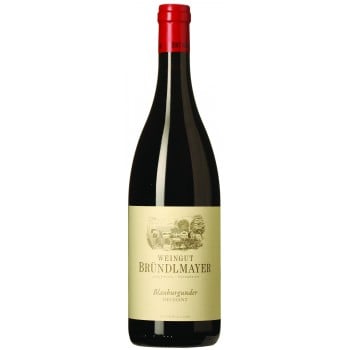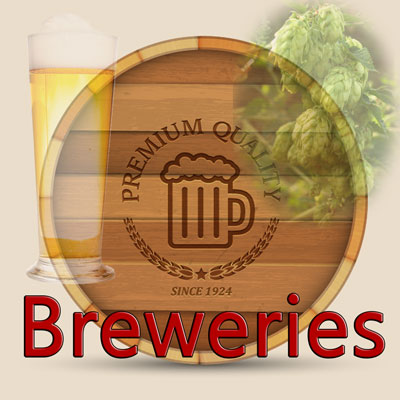Blauburgunder grapes
Blauburgunder is an extremely popular red wine grape variant belonging to the Vitisvinifera specie. This grape which is typically grown in Germany is also known by names such as Blauer Spatburgunder, Spatburgunder, Blauer Burgunderin Austria, Pinot Noir in France, Pinot Nero in Italy and Pinot Noir in the United States of America.
This wine grape typically derives its name from the from the French words for black and pine, since this dark coloured grape used for making wine appears in the shape of a tightly clustered, pine cone shaped bunch.
Blauburgunder grapes are mostly grown in the cooler climates of the world and are chiefly associated with the Riesling region of Germany and Burgundy region of France.
Other regions which have developed a reputation for Blauburgunder include, Willamette Valley of Oregon, Walker Bay region of South Africa, Central Coast, Carneros and Russian River American Viticultural Areas of California in USA, Yarra Valley and Tasmania of Australia and the Central Otago, Marlborough and Martinborough regions of New Zealand.
Blauburgunder grape variants are also, one of the primary ingredients used in the production of sparkling wines, not only in the Champagne region, but across the wine regions of the world.
Vine and Viticulture of Blauburgunder Grape
Blauburgunder grape typically has pentagonal; three to five lobed leaves having petiole which is slightly overlapping.
When it comes to the grape cluster, they are small, compact having small round berries which are cylindrical and having a bluish black colour with a thin skin.
These grapes typically have a mid to late ripening season.
Blauburgunder Wine Characteristics
The Blauburgunder grape variants produce one of the finest wines in the world. The only problem with this grape variant is, it is extremely challenging to cultivate it and transform it into wine.
These grape variants tend to develop in tightly packed clusters, which make it extremely susceptible to several viti-cultural hazards which include rotting, and hence these grape variants require proper canopy management.
In general, these grape variants are weak, with them suffering from a lot of diseases. The genetics of this grape also make it highly susceptible to mutation.
The Blauburgunder grape has a thin skin and contains low levels of phenolic compounds which tend to produce a light coloured, rather pale, translucent, medium bodied, low tannin wine which requires a considerable amount of aging.
This wine produces a very subtle flavour. Young, Blauburgunder wines tend to have a red fruit aroma of raspberries, strawberries and cherries.
Older and aged wines tend to develop vegetal and barnyard aromas, which kind of increase the complexity of the wine.
Blauburgunder Wine Regions
Blauburgunder variants of grapes occupy around 117,000 hectares (290,000 acres) of plantation land worldwide. These plantation lands happen to be in the following regions of the following countries:
- Nuits St. Georges, Morey St. Denis, Vougeot, FlagneyEchezeaux, GevreyChambertin, , ChambolleMusigny, AloxeCorton, VosneRomanee regions of France roughly accupying around 75,760 acres of land
- Sta Rita Hills, Santa Lucia Highlands, Sonoma, , Willamette Valley regions of United states roughly occupying 73,600 acres of land
- Pfalz, Rheinhessen, Württemberg, Baden regions of Germany roughly occupying 29,049 acres of land
- Central Otago , Martinborough, Marlborough regions of New Zealand roughly occupying 10,648 acres of land
- Veneto, Alto Adige, Fruili regions of Italy roughly occupying 10,082 acres of land
- Victoria region of Australia roughly occupying 8,693 acres of land
- Maipu Valley, Casablanca Valley, Limari Valley, Central Valley regions of Chile roughly occupying 7,127 acres of land
- Rio Negro region of Argentina roughly occupying 4,450 acres of land
- Stellenbosch, Walker Bay,Western Cape region of South Africa roughly occupying 2,520 acres of land
This wine, when aged for long, tends to give out French oak barrel flavour. As far as tannin level is concerned, it is medium low, with medium high levels of acidity.
This wine needs to be aged for 2-18 years, depending on the style it is prepared in. As far as temperature to be served at is concerned, it should ideally be 17 degrees Celsius or 63 degrees Fahrenheit.
Blauburgunder Food
Blauburgunder is a wine which goes well with almost all food types. Blauburgunder goes well with items like Pappardelle pasta with a Porcini Ragu, roasted mushrooms with cheese and plum sauce.
This wine really blends well with French and German cuisine. This wine also goes well with soft cheeses and nutty medium cheeses like
In fact, Comté (also called as Gruyère de Comté) and Blauburgunder can form a perfect cheese and a wine pair.

Michael Bredahl
Wine Writer
Michael is an online enthusiast, with a lot of knowledge about online marketing. Traveling around the world to hunt for the perfect wine. Latest on Sicily, where Etna has a huge impact on the taste, which is strong with a bitter aftertaste for the youngest wines, but older wines are fantastic. Drinking wine, and writing about them, are one the passions. Remember to drink responsibly 🙂
Are you a Copywriter?
We have a lot of articles without much content, if you can do it better, you are welcome to write a nice article, and get the proper credit for that. Read more information about beeing an author, and Contact us for more information.













